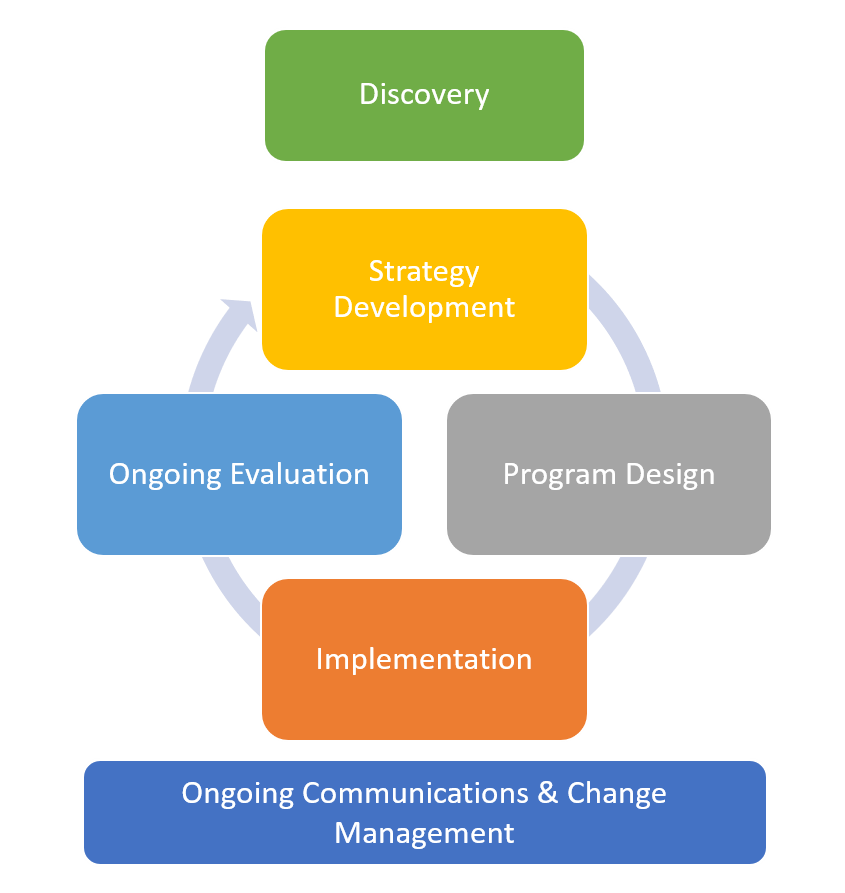Many travel managers now find themselves tasked with integrating their organization’s meetings program into their travel program. This makes complete sense: Many of the suppliers are the same; both rely on technology; and they require similar processes, such as sourcing, booking, paying, and expensing.
But there are a few key differences between travel and meetings management, and the steps to integration laid out below, are meant to frame the process for success. An orderly integration includes several critical phases: discovery, strategy development, program design, implementation, post-implementation evaluation, and ongoing communications and change management. 
Discovery: Spend, Risk, Stakeholders, Touchpoints
During the discovery phase, the travel manager needs to:
• Assess current meeting and event spend levels (how much spend, by whom, with whom, and when).
• Determine any risks associated with the organization’s meetings, such as regulatory compliance, intellectual property protections, and duty-of-care issues.
• Identify savings and program-improvement opportunities, and then identify and align stakeholders and resources. Savings may come from joint programs, staff cross-utilization, and data-consolidation opportunities.
• Identify key touchpoints—staffing, air and hotel suppliers, policy, processes, technologies, data, and so on—in order to uncover opportunities for creating greater efficiencies that can be planned for during the strategy phase.
Strategy: Defining Goals, Standardizing Processes
In the strategy-development phase, travel managers use what they’ve learned in the discovery phase to define the goals of the joint program. This is also the time to:
• Mesh the supplier-management functions, which includes standardizing hotel contract terms across the travel and meeting programs and consolidating hotel contract strategies, using the total hotel spend to improve rates, terms and conditions, and amenities.
• Align the standardized processes and procedures of both parts of the program, which means conducting joint weekly team meetings, cross-training the travel and meeting team, aligning travel and meeting policies, and merging the supplier-relationship management teams.
• Integrate the travel and meetings technology solutions, where appropriate. This could include connecting online booking tools to the meetings event attendee registration system, aligning a duty-of-care technology with group air bookings, and having travel data feed the meetings-reporting system, and vice-a-versa.
• Align payment platforms, including corporate-card and meeting-card suppliers, in order to increase rebates.
Change Management
One aspect of a travel and meetings integration that is often overlooked is the need for a comprehensive change-management and communications program. This could include the creation of a combined travel and meetings portal, showing your suppliers the benefits of the program so they won’t resist it, proactively identifying potential internal sources of resistance and addressing their concerns by involving them from the beginning in design decisions that will impact them. Best practices include communicating coming changes frequently and on platforms most likely to connect with stakeholders, and also sharing success stories with executive sponsors and key stakeholders.
Execution and Evaluation
The final steps in integrating the travel and meetings programs are, first, to call upon all resources, internal and external, to implement the new program design in keeping with the strategy and, second, to conduct ongoing evaluations of the new program to assess whether it is meeting stakeholder needs, and then adjusting where necessary.
All this effort pays off, as the benefits of integrating travel and meetings management programs include maximizing savings from preferred suppliers, increasing card rebates, managing staff headcount, uncovering new savings and process-improvement opportunities, increasing compliance with preferred suppliers, and improving duty-of-care management.
Shimon Avish is president of Meetings Management Consulting, which helps organizations curate and integrate technologies into their travel and meetings management programs, among other services.





